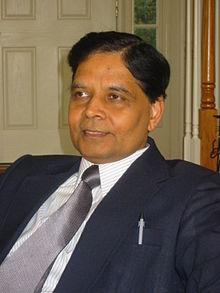
The Narendra Modi government will be completing two years next week. Given this, currently there is a lot of propaganda on. The finance minister Arun Jaitley has been giving interviews highlighting the good performance of the government.
The Vice Chairman of NITI Aayog, economist Arvind Panagariya, has also been writing columns in newspapers talking about the good show of the Modi government. There is nothing wrong with this. It is the right of every government to highlight what it thinks is the good work that it has done, in the best possible way.
And as long as governments don’t place full page advertisements in newspapers, highlighting their achievements by wasting taxpayer’s money, I have nothing against the entire idea of the government talking about its good work. Please talk about it as much as you want to, but don’t waste my taxes in the process.
One of the points that Panagariya made in a column in the Business Standard was about village electrification. The general impression is that the government has done good work on this front.
As he wrote: “In power, the government has already electrified 6,816 villages in the last two years compared with 5,189 villages in the three years before that.”
Take a look at the following table. It gives the number of villages electrified every year, over the last decade.
| Years | Villages electrified |
| 2005-2006 | 9819 |
| 2006-2007 | 28706 |
| 2007-2008 | 9301 |
| 2008-2009 | 12056 |
| 2009-2010 | 18374 |
| 2010-2011 | 18306 |
| 2011-2012 | 7934 |
| 2012-2013 | 2587 |
| 2013-2014 | 1197 |
| 2014-2015 | 1405 |
| 2015-2016 | 7128* |
| Source: Annual Report Rural Electrification Corporation 2014-2015 | |
| * Press release put out by Press Information Bureau dated April 4, 2016 | |
Let’s run the numbers for what Panagariya said. In the last two years 8,533 villages (7128 villages in 2015-2016 and 1405 villages in 2014-2015) have been electrified. Panagariya says 6,866 villages. In the three years before that 11,718 villages were electrified (1197 in 2013-2014, 2587 in 2012-2013 and 7934 in 2011-2012) which is more than the villages electrified in the last two years and not less as Pangariya suggests.
So where did Panagariya get his numbers from? I think he has gotten the years mixed up while making the calculation. In the years 2012-2013, 2013-2014 and 2014-2015, a total of 5,189 villages were electrified. This is the same as Panagariya’s number. But Panagariya has essentially suggested years 2011-2012, 2012-2013 and 2013-2014. This is incorrect.
I guess basically what he wanted to compare was the performance of the government on the village electrification front in 2015-2016, with that of previous three years, i.e. 2012-2013, 2013-2014 and 2014-2015. In 2015-2016, the government electrified 7128 villages, which is close to the 6,816 number that Panagariya offers, for the last two years. This difference could be primarily because end of the year data keeps getting updated I guess.
The Modi government has put up a decent show as far village electrification in 2015-2016 is concerned. More villages were electrified in 2015-2016, than were electrified in the three years before that. This is what Panagariya I guess wanted to say. But he got the years mixed up.
Nevertheless, let’s look at the performance on the village electrification front between 2005-2006 and 2011-2012. In each of the years more villages were electrified than in 2015-2016. In 2005-2006, 28,706 villages were electrified, which is four times the number last year. Hence, Panagariya is essentially cherry-picked data in order to show the Modi government and the power minister Piyush Goyal in good light.
Also, as I have mentioned in the past, if we keep comparing the economic performance of the Modi government to the second half of the second term of the Manmohan Singh government, things are definitely going to look better. Nevertheless, that is too low a benchmark to set. Anything will look better in comparison to those years.
Further, during the year 2014-2015, the Modi government governed for to ten months. During the course of the year only 1,405 villages were electrified. This can’t be totally held against the government because every government needs time to start operating. Also, given the fact that the number of villages electrified in 2012-2013 and 2013-2014 were very low, some time would have been needed to get the system going again.
It needs to be mentioned here that as the number of villages to be electrified comes down, it becomes more and more difficult to electrify the villages and the same pace cannot be maintained. If one takes this factor into account, electrifying more than 7,000 villages in a single year, is not a bad performance.
But trying to pass it off as something extraordinary is really not done.
Discslosure: The basic idea for this column came after reading Amitabh Dubey’s column Arvind Panagariya Spins an Infrastructure Tale on Chunauti.org
The column was originally published in the Vivek Kaul Diary on Equitymaster.com